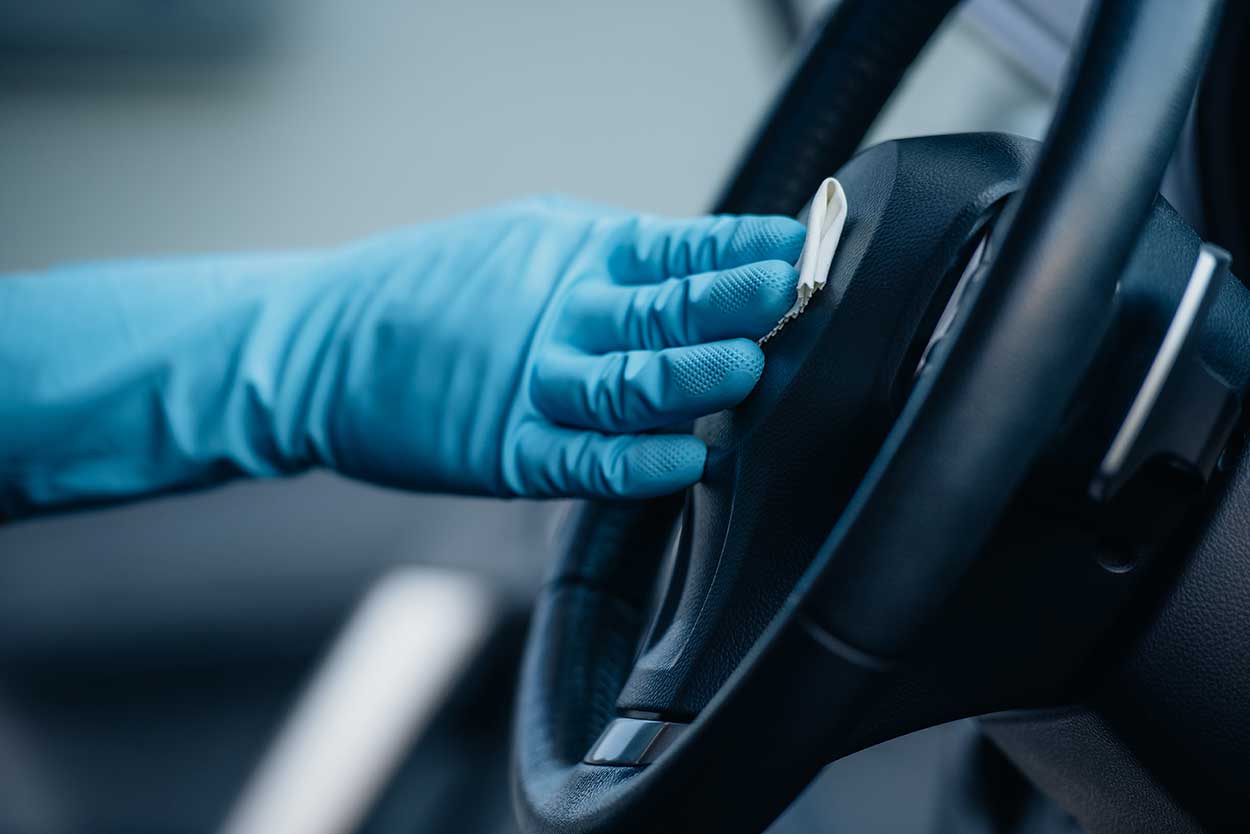In order to limit the spread of coronavirus as much as possible, it’s important that we all follow government guidelines and take reasonable precautions to keep ourselves and others safe. This includes ensuring that the car we use is kept coronavirus-free.
Of course, it’s easy to assume that any journeys made within the confines of your own vehicle will be relatively risk-free, since you’re unlikely to come within two metres of other people. However, it should be remembered that cars accumulate dust, dirt and grime over time, all of which act as perfect carriers for the virus.
With that in mind, it’s advisable to perform a thorough clean on your car to ensure that it’s bacteria-free and safe to drive for any essential trips you may need to take. This handy guide will walk you through the steps you should follow to ensure that coronavirus doesn’t infect your vehicle.
Before you begin
If possible, leave the car locked and untouched for three days before beginning the clean-up operation. While the scientific community is still unsure exactly how long the virus can remain active on surfaces, previous studies conducted on the longevity of other viruses from the same genus show they are likely to die out within 72 hours.
It’s also a good idea to acquire the appropriate personal protective equipment (PPE) to minimise the risk of contracting the disease should you come into contact with any surviving remnants of COVID-19. This means wearing a face mask, apron and gloves, all of which should be disposable if possible.
You must also make sure you are equipped with the necessary cleaning supplies to tackle the job. Fortunately, you can perform a deep clean on your clean without the need for any specialist equipment. All that’s required is any household disinfectant (that doesn’t contain bleach) and a clean, preferably new, cloth.
Finally, it’s imperative that you remove everything from your car to give you a clean slate upon which to work. It’s easiest if you divide the items into three piles – items which will return to the car after the clean-up is complete, those which can be stored elsewhere and those which can be thrown away. Minimising the number of things in your car will reduce the available surface area for the virus to land on.
A car cleaning checklist
Before tackling the interior of the car, make sure you give all handles (including the one found on the boot) a good wipe down to get rid of any bacteria. The same goes for the keys to the car themselves. As some of the most commonly touched items associated with your vehicle, they’re high risk as disease carriers. Then you can move inside, where you should concentrate on the following areas:
1. Driver’s seat
The steering wheel is undoubtedly the part of your car which receives the most human contact, so take care to reach the out-of-sight spots where your fingers rest. Do the same for any buttons on or protruding from the wheel itself, such as the horn, control stalks and infotainment controls. Don’t forget the gear stick and handbrake and be sure to wipe down the bonnet release lever, too.
2. Dashboard
The control panel located on your dashboard is an area which is touched frequently, so it should be another top priority for your deep clean. Remember to thoroughly spray and wipe each individual button on the radio or infotainment display, as well as the temperature controls and air vent grips. Finally, give the entire surface of the dashboard reaching to your windscreen a careful wipe down.
3. Seats
Next, move on to each seat in the car, working on them individually and paying particular attention to the seat belts, head rests, adjustment controls and seat pockets. When cleaning the seat belts, be sure to extend its entire length and clean the whole surface, as well as taking extra special care with the clips, buckles and buttons.
4. Doors
The doors themselves are another heavily touched surface inside a car. The handles are the most logical place to begin, but don’t neglect the window adjustment controls, hand rests, grab handles and pockets. Finally, wipe down the windows (including the sunroof, if your car has one) and the rear-view mirror above the dashboard.
5. Other areas of concern
Given that the boot isn’t used for every trip and doesn’t come into your direct eyeline much of the time, it’s easy to forget about it. However, you should take care to remove and disinfect any items which may be resting in there, as well as wiping down the parcel shelf and floor tabs thoroughly. Do the same for your glove box, cleaning it inside and out, as well as the central storage compartment and all cupholders.
After the clean-up is complete
Once you have followed all of the steps outlined above and you’re satisfied that your car is completely free from coronavirus, it’s important to ensure that you are, as well.
That means removing all PPE and, if disposable, double bagging it within two bin liners to minimise the chance it could infect someone else. If possible, leave it in a secure place for 72 hours before depositing it with the rest of your refuse. If they are not disposable, wash the items according to the manufacturer’s directions at the highest temperature setting possible.
Next, move to the bathroom and take care to wash your hands thoroughly for a minimum of 20 seconds. An easy way to ensure you’ve spent long enough doing so is by singing the chorus of your favourite song – a personal preference of ours is “Car Wash” by Rose Royce!
Finally, make a note of the date you performed your car’s deep clean for future reference. It’s a good idea to repeat the exercise on a regular basis, perhaps one a week or once a fortnight. Doing so will give you the best possible chance of keeping both your car and your home completely free of coronavirus.
Still looking worse for wear?
As well as slowing the spread of the virus, cleaning your car is a great way to keep it looking its best. But sometimes, it’s simply impossible to get it looking like it used to. That’s where My Car Credit can help. We offer quick, hassle-free car finance for drivers across the UK. So, whatever your circumstances, you can upgrade your car and spread the cost.
Apply now to see how we can help you.
Rates from 9.9% APR. Representative APR 10.9%
Evolution Funding Ltd T/A My Car Credit
Require more help?
Got a question you can’t find the answer to, or need some advice and guidance around taking out car finance? Our Car Credit Specialists are friendly, experienced, and here to help so get in touch today!



